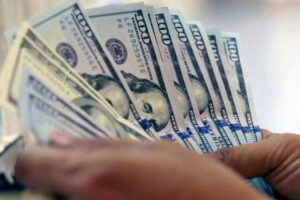THE Philippines’ dollar reserves declined by 1.9% as of end-April, as the National Government (NG) repaid more foreign debt, the central bank said.
Data from the Bangko Sentral ng Pilipinas (BSP) showed gross international reserves (GIR) dropped to $104.6 billion as of end-April from $106.7 billion as of end-March.
Year on year, the dollar reserves rose by 1.9% from $102.65 billion.
“This latest GIR level provides a robust external liquidity buffer,” the BSP said.
The dollar reserves in April were the lowest since the $103.27 billion seen in January.
“The month-on-month decrease in the GIR level reflected mainly the (1) NG’s drawdowns on its foreign currency deposits with the BSP to meet its external debt obligations and pay for its various expenditures, and (2) BSP’s net foreign exchange operations,” the central bank said in a statement.
International reserves are foreign assets of the BSP held mostly as investments in foreign-issued securities, monetary gold, and foreign exchange. These are supplemented by claims to the International Monetary Fund (IMF) in the form of reserve position in the fund and special drawing rights (SDRs).
Ample foreign exchange buffers protect the country from market volatility and ensure that it is capable of paying its debts in the event of an economic downturn.
BSP data showed the level of dollar reserves as of end-April is enough to cover about 3.6 times the country’s short-term external debt based on residual maturity.
It is also equivalent to 7.2 months’ worth of imports of goods and payments of services and primary income.
BSP data showed foreign investments fell 3.19% to $86.09 billion at end-April from $88.9 billion as of end-March. Year on year, foreign investments inched up 1.19% from $87.13 billion.
The country’s reserve position in the IMF rose by 13.57% to $741.6 million as of end-April from $653 million a month earlier. It also went up by 0.75% from $736.1 million a year ago.
SDRs — or the amount which the Philippines can tap from the IMF’s reserve currency basket — was unchanged month on month at $3.8 billion. Year on year, it dropped by 1.7% from $3.74 billion.
The value of the central bank’s gold holdings went up by 4.51% to $13.34 billion at end-April from $12.76 billion a month ago. Year on year, it jumped by 30.06% from $10.26 billion.
The BSP’s foreign exchange holdings increased by 23.52% to $648.6 million at end-April, from $525.1 million at end-March. Year on year, it decreased by 17.84% from $789.4 million.
Meanwhile, net international reserves slipped by 1.88% to $104.6 billion at end-April from $106.6 billion as of end-March.
Net international reserves refer to the difference between the GIR and reserve liabilities, including short-term foreign debt, and credit and loans from the IMF.
“The decline in GIR in April was mainly due to debt payments, foreign exchange operations, and lower gold valuations,” Philippine Institute for Development Studies Senior Research Fellow John Paolo R. Rivera said in a Viber message.
Rizal Commercial Banking Corp. Chief Economist Michael L. Ricafort said that the BSP’s possible interventions to defend the peso could have also led to the lower GIR in April.
The peso closed at P55.84 a dollar on April 30, strengthening by P1.37 from its P57.21 finish on March 31. Year to date, the local unit gained by P2.005 from its P57.845 close on Dec. 27, 2024.
“Moving forward, GIR is expected to stay stable, supported by remittances, BPOs (business process outsourcing), tourism, and government borrowings, though risks like global volatility and a widening current account deficit could weigh on it,” Mr. Rivera said. — AMCS
